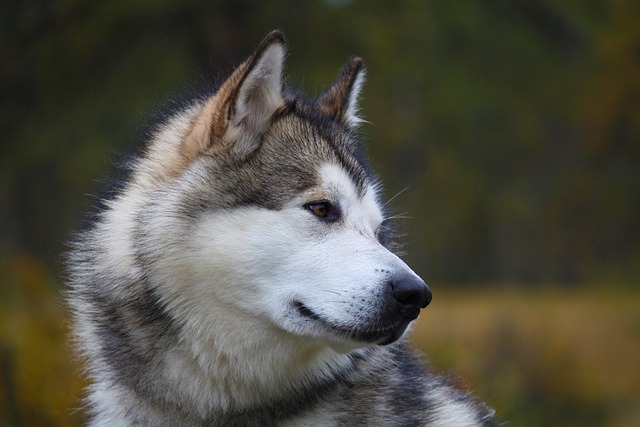


The Alaskan Husky is a versatile and hardworking breed primarily known for its role as a sled dog. Developed in Alaska for endurance, speed, and strength, the Alaskan Husky is not a single breed but rather a type of working dog that has been selectively bred for performance. Unlike the more well-known Siberian Husky, the Alaskan Husky comes in a variety of sizes and coat types, as it was bred for specific traits rather than a standardized appearance. Alaskan Huskies are known for their incredible stamina, intelligence, and friendly, cooperative nature, making them excellent working dogs and companions for active individuals.
The Alaskan Husky has its roots in the early sled dog culture of Alaska. The breed's origins can be traced to the native sled dogs of the Inuit people, who used dogs to transport goods across the harsh Arctic landscapes. Over time, these dogs were selectively bred by settlers and mushers for their ability to pull sleds over long distances. The Alaskan Husky, unlike other breeds such as the Siberian Husky, is not a purebred dog but a mix of various breeds, including the Alaskan Malamute, Greyhound, and various hunting and sledding breeds. The goal of breeding was to create a dog with exceptional endurance, speed, and agility, particularly for long-distance races like the Iditarod. Today, Alaskan Huskies are commonly seen in competitive sled dog races and are known for their outstanding physical abilities.
The Alaskan Husky is a medium to large-sized dog with a well-muscled and athletic build. Its size can vary depending on the individual dog's lineage and specific purpose, but they typically range between 40 to 60 pounds in weight and stand about 20 to 24 inches tall at the shoulder. Alaskan Huskies have a double coat that is thick and dense to protect them in extreme cold temperatures, with an undercoat that is soft and insulating. Their coat colors can vary widely, from solid black, white, and gray to a combination of these colors, often with striking markings around the face. They have erect, triangular ears, almond-shaped eyes that are typically brown or blue, and a bushy tail that curls over their back.
The Alaskan Husky is known for its friendly, social, and cooperative nature. They are typically affectionate with their families, making them good pets for active households. While they are not typically aggressive, they are independent and have a strong prey drive, which can make them challenging to manage around smaller animals. Alaskan Huskies are also known for their intelligence and problem-solving ability, which makes them highly trainable but also prone to boredom if not mentally stimulated. They generally get along well with other dogs, especially when raised together, and are happiest when they have a task to focus on. Although they are friendly and energetic, they are also known for being a bit reserved with strangers.
The Alaskan Husky is a high-energy breed with very high exercise and activity needs. This dog thrives on physical activity and mental stimulation, and it excels at endurance-based activities such as running, hiking, and, of course, sledding. An Alaskan Husky requires daily exercise to stay healthy and avoid becoming destructive due to excess energy. They do best in homes with access to large spaces, such as yards, or with owners who can provide them with regular outdoor adventures. In addition to physical exercise, mental stimulation is also essential, and activities such as obedience training, puzzle games, and problem-solving tasks are great for keeping their minds sharp. This breed was bred for long days of running and pulling sleds, so they need ample opportunities to release their energy.
The Alaskan Husky is highly intelligent, which makes training easier, but their independent streak and strong drive can make them a bit stubborn. They respond best to positive reinforcement methods, such as praise, treats, and toys, and can become bored with repetitive training sessions. Early socialization is important to ensure that they are well-behaved around other animals, people, and environments. Due to their strong prey drive, Alaskan Huskies should be taught to respect boundaries, especially in environments with smaller animals. With consistent, patient training, they can be taught basic commands and be well-mannered companions. However, they are not always the best fit for first-time dog owners due to their strong personalities and need for mental and physical challenges.
Alaskan Huskies are generally healthy dogs, but like all breeds, they can be prone to certain health issues. Some of the common health problems in Alaskan Huskies include hip dysplasia, progressive retinal atrophy (PRA), and heart issues, especially in older dogs. Regular veterinary visits, a balanced diet, and exercise are essential to keep the dog healthy. Grooming requirements for the Alaskan Husky are moderate. While their double coat helps protect them from the cold, it also requires regular brushing, especially during shedding seasons, to keep their coat clean and healthy. Bathing is only necessary when they are particularly dirty, as their coat is naturally self-cleaning. Their ears should be checked regularly, and dental hygiene should also be maintained with routine brushing.
The average lifespan of the Alaskan Husky is between 10 to 15 years, with proper care. They are a relatively healthy breed, but their longevity can be impacted by factors such as diet, exercise, and regular veterinary care. Ensuring they maintain a healthy weight, get adequate exercise, and receive preventive health care will contribute to their overall well-being and longevity. Their active nature typically helps them stay physically fit throughout their lives, but it is important to monitor them for any age-related conditions as they grow older.
© copyright Dog Compendium 2024 - 2025